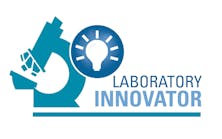Can labs give EMR software to referring physicians?
The provision of electronic medical record (EMR) software and interfaces by laboratories to referring physicians has become a sticky issue. In light of the federal funding available to physicians if they have “meaningful use” of EMRs — as well as the prospective reimbursement penalties for the failure to utilize EMRs — referring physicians are asking laboratories to assist in the funding of their EMR systems.
An exception under the Stark law and a safe harbor under the Medicare and Medicaid anti-kickback law protects only a narrow range of donations of software. Any donation that does not fall within the Stark exception or safe harbor under the anti-kickback law places the lab as well as the referring physicians at risk for the criminal and civil penalties under both federal fraud and abuse laws.
The requirements under the anti-kickback law safe harbor and Stark law exception are virtually identical. Under the safe harbor and exception, laboratories can subsidize the cost of compliant EMR technology to physicians at 85% of the cost of such technology. The recipient is required to pay its 15% share prior to receiving the EMR technology; this payment cannot be financed by the donor or any affiliated entity.
Only non-monetary remuneration that consists of items and services in the form of software or information technology and training services that are necessary and used predominantly to create, maintain, transmit, or receive electronic health information are protected under the rule. Covered items and services include interface and translation software; rights, licenses and intellectual property related to EMR software; connectivity services, including broadband and wireless Internet services (including connectivity fees); clinical support and information services related to patient care (but not separate research or marketing support services); maintenance services; secure messaging (i.e., permitting physicians to communicate with patients through electronic messaging); and training and support services. Hardware is not covered, nor is operating software that makes the hardware function; storage devices; software with core functionality other than EMR (e.g., software focused primarily on practice management or billing); or items or services used by the recipient primarily to conduct personal business or business unrelated to the recipient’s clinical practice or clinical operations. The provision of staff to recipients or their offices is also not covered.
Software and services are not “necessary” if the recipient already possesses equivalent software or services. Under the rule, if a donor knows that the recipient already possesses equivalent items or services, or acts in deliberate ignorance or reckless disregard of that fact, the donor will not be protected by the safe harbor and exception. Accordingly, prudent donors should make reasonable inquiries to recipients and document these communications. The rule does not preclude upgrades of items or services that enhance their functionality.
The software must be interoperable. “Interoperable” means that, the software is able 1) to communicate and exchange data accurately, effectively, securely, and consistently with different information technology systems, software applications, and networks in various settings; and 2) to exchange data such that the clinical or operational purpose and meaning of the data are preserved and unaltered.
Donors should have a “reasonable basis” for determining that software is interoperable. To avoid uncertainty, it is beneficial to donate software that is certified as being interoperable by a body that is recognized by the Secretary of the Department of Health and Human Services. Presently, the Certification Commission for Healthcare Information Technology (CCHIT) is certifying EMR technology. CCHIT and its list of certified EMR technology can be found at www.cchit.org.
The EHR software must contain electronic-prescribing capability, either through an electronic-prescribing component or the ability to interface with the recipient’s existing electronic-prescribing system that meets the applicable standards under Medicare Part D at the time the items and services are provided.
In donating EMR technology, the donor cannot take into account the volume or value of referrals or other business that is generated between donor and the recipient. The rule permits donors to use selective criteria for choosing recipients, provided that neither the eligibility of the recipient nor the amount or nature of the items or services is determined in a manner that directly takes into account the volume or value of referrals or other business generated between the parties. If any one of the following selection criteria set forth in the final rule is met, the determination is deemed not to directly take into account the volume or value of referrals or other business generated between the parties.
1. The determination is based on the total number of prescriptions written by the recipient (but not the volume or value of prescriptions dispensed or paid by the donor or billed to a Federal healthcare program).
2. The determination is based on the size of the recipient’s medical practice (for example, total patients, total patient encounters, or total relative value units).
3. The determination is based on the total number of hours that the recipient practices medicine.
4. The determination is based on the recipient’s overall use of automated technology in his medical practice (without specific reference to the use of technology in connection with referrals made to the donor).
5. The determination is based on whether the recipient is a member of the donor’s medical staff, if the donor has a formal medical staff.
6. The determination is based on the level of uncompensated care provided by the recipient.
7. The determination is made in any reasonable and verifiable manner that does not directly take into account the volume or value of referrals or other business generated between the parties.
Accordingly, a laboratory cannot condition a donation on whether or not a recipient is a client.
Jane Pine Wood is an attorney at McDonald Hopkins in Dennis, MA. She has represented physicians, clinical and anatomic laboratories, and other healthcare providers in corporate, regulatory, reimbursement, contractual, and other legal matters.




